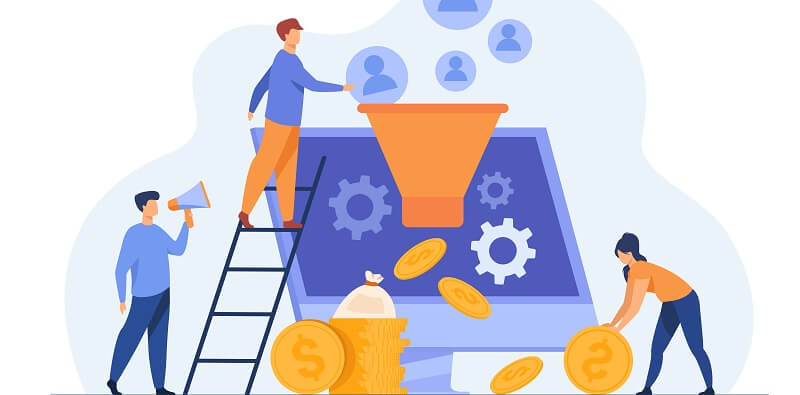In today’s competitive business landscape, organizations are constantly seeking innovative marketing strategies to drive revenue growth, acquire customers, and foster long-term customer loyalty. Two prominent approaches that have gained traction in recent years are demand generation and account-based marketing (ABM). While both strategies aim to achieve these objectives, they employ distinct methodologies and cater to different aspects of the marketing funnel. This article explores the differences and synergies between demand generation and ABM, highlighting how combining these approaches can maximize marketing effectiveness and deliver exceptional results.
The primary objective of demand generation
At its core, demand generation revolves around creating demand for a product or service, even among individuals who may not be actively seeking it. The primary objective is to generate interest, capture leads, and ultimately convert them into loyal customers. Demand generation encompasses a wide range of marketing activities aimed at raising brand awareness, driving engagement, and nurturing prospects through the marketing funnel.
To effectively implement demand generation strategies, organizations must consider several foundational concepts
Target audience identification: Identifying the ideal target audience is crucial for crafting tailored marketing campaigns that resonate with potential customers.
Buyer persona development: By developing detailed buyer personas, organizations can better understand their target audience’s pain points, motivations, and preferences, allowing for more personalized and impactful marketing initiatives.
Content strategy: Creating compelling and relevant content across various channels is vital to pique interest, engage prospects, and build brand credibility.
Multichannel marketing: Leveraging multiple marketing channels, such as email, social media, and search engine optimization, ensures a broader reach and increased visibility among target audiences.
Lead capture and conversion: Implementing effective lead capture mechanisms, such as landing pages, forms, and gated content, are crucial to capturing interested prospects and converting them into qualified leads.
Marketing automation: Automating repetitive marketing tasks streamlines workflows, enables personalized interactions, and ensures consistent engagement throughout the customer journey.
Data analytics and measurement: Tracking and analyzing data helps identify successful marketing strategies, optimize campaigns, and make data-driven decisions that yield better results.
Continuous optimization: Regularly testing and refining marketing initiatives based on data analysis and insights leads to continuous improvement and enhanced marketing effectiveness.
The reverse-funnel approach of ABM
Unlike demand generation, ABM takes a reverse-funnel approach. Instead of targeting a broad audience, ABM focuses on specific high-value accounts or companies that align with an organization’s ideal customer profile. By prioritizing quality over quantity, ABM aims to build strong, personalized relationships with key accounts.
Contrasting the focus of demand generation and ABM
While demand generation focuses on scaling and optimizing marketing efforts to capture a broader market share, ABM prioritizes deepening relationships and maximizing customer lifetime value within a select group of high-value accounts. By concentrating resources on these key accounts, ABM seeks to generate significant business impact and establish long-term partnerships.
Treating each key account as a “market of one” in ABM
The core philosophy of ABM is to treat each key account as a “market of one.” This approach involves conducting extensive research, understanding client needs and goals, and crafting highly customized and relevant experiences and solutions for those specific accounts. By aligning with the unique requirements of each account, ABM ensures a high level of engagement, satisfaction, and loyalty.
The power of combining ABM and demand generation approaches
Combining ABM and demand generation approaches can produce a powerful and successful marketing strategy. While demand generation casts a wide net to capture leads from a broad pool of prospects, ABM reinforces the personalized approach by targeting high-value accounts. This synergy allows organizations to scale their marketing efforts while maximizing the effectiveness of engaging key accounts.
Complementing ABM with demand generation
Demand generation, with its extensive reach and targeting of a broader audience, complements ABM by capturing and nurturing leads from a wider pool of potential customers. By blending demand generation tactics with ABM’s personalized approach, organizations can cast a wider net for capturing leads while effectively nurturing and converting key accounts.
The benefits of aligning strategies and leveraging their strengths
By aligning demand generation and ABM strategies and leveraging their respective strengths, businesses can create a holistic marketing approach that drives revenue growth, enhances customer acquisition, and fosters long-term customer loyalty. The combined approach allows organizations to balance both quality and quantity, ultimately leading to increased profitability and sustainable business growth.
Demand generation and ABM are two complementary strategies that, when combined, create a holistic marketing approach. Demand generation strategies capture and nurture leads from a broader market, while ABM focuses on building strong relationships and delivering tailored experiences to high-value accounts. By aligning these approaches and leveraging their strengths, organizations can optimize marketing efforts, grow revenue, acquire valuable customers, and foster long-term loyalty in a highly competitive marketplace.

